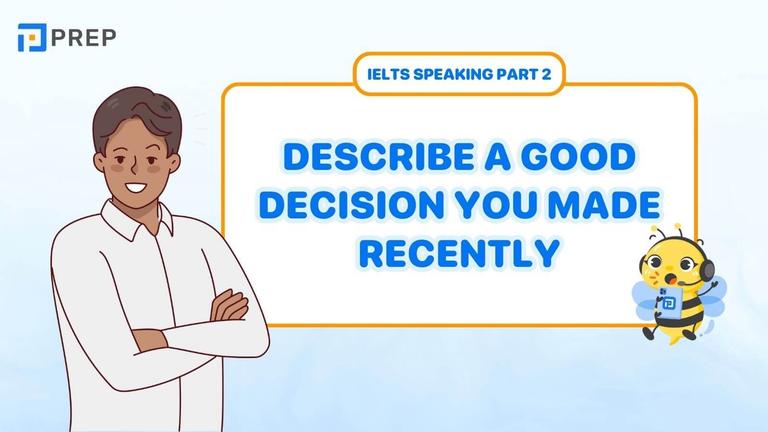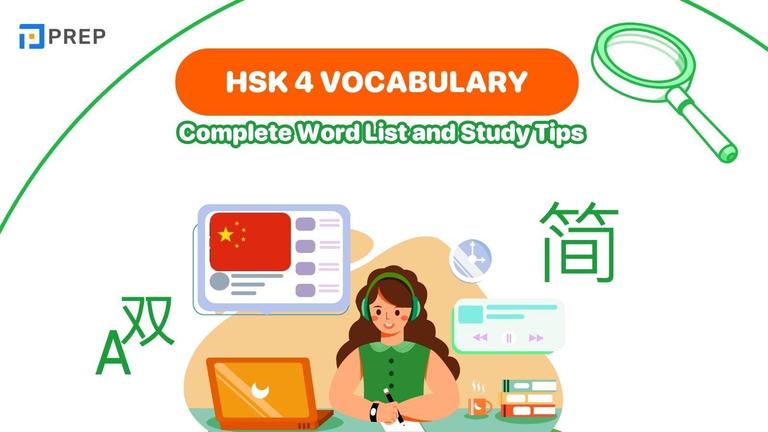Special Passive Voice: Structures, Uses, and Exercises
The special passive voice goes beyond standard passive forms, appearing in reporting, causative, and advanced grammar patterns. This guide explains its structures with clear examples, highlights common mistakes, and provides practical exercises to help learners use it effectively in exams and writing.
- I. What Is Special Passive Voice?
- II. The structure of special passive voice
- 1. A verb + 2 objects
- 2. A Verb + an object + an infinitive verb with “to”
- 3. A verb + an object + a bare infinitive verb (without “to”)
- 4. A verb + an object + a gerund
- 5. A verb + an infinitive verb/gerund + an object
- 6. A verb + an object + the object’s complement
- 7. A verb + a that-clause
- 8. Have/get something done
- III. Phrasal Verbs and Collocations with Special Passive Voice
- IV. Synonyms and Antonyms of Special Passive Voice
- V. Exercises and Practice with Special Passive Voice
- VI. Master IELTS Skills for a High Band Score

I. What Is Special Passive Voice?
In English grammar, a special passive voice refers to uncommon or advanced passive constructions that go beyond the basic “subject + be + past participle” form. These structures often involve more complex sentence elements, such as reporting verbs, causative verbs, gerunds, infinitives, or clauses.
The special passive voice includes all passive structures that:
- Are not purely straightforward passive forms
(e.g. The book was written by her. – regular) - Involve advanced verb patterns, multi-object sentences,
or embedded structures (e.g. He is believed to have left.)
In simpler terms, these are passives that go beyond "Someone does something" → "Something is done."
This type of passive voice is called "special" because:
- It includes non-standard or high-level grammar structures.
(e.g., It is said that..., have something done, be believed to...) - Learners often find it difficult to identify or reproduce naturally.
- It is often linked to more formal, academic, or professional English.
Unlike the regular passive, which focuses on shifting object to subject and using the verb “to be,” special passives alter sentence meaning or emphasis more subtly, often removing the doer entirely or shifting the grammatical focus to the action/result.
Understanding and using the special passive voice correctly is essential for learners aiming for:
- Higher proficiency levels in writing and speaking
- Clarifying meaning when the subject is unknown, unimportant, or implied
- Building formal sentence structures, which are common in academic writing, reports, or high-stakes exams such as IELTS, TOEFL, or business communication tests
For example: People believe he is talented. → He is believed to be talented. (special passive with reporting verb)
This transformation demonstrates grammatical accuracy and stylistic control—key elements for achieving high scores in exam writing and speaking sections, as well as writing emails, presentations, or research documentation.

II. The structure of special passive voice
The special passive voice in English goes beyond the standard subject + be + past participle pattern. These advanced structures appear in various grammatical contexts where passive forms follow more complex verb patterns.
Below are the core structures that define this category, each with distinct rules and usage.
1. A verb + 2 objects
Many verbs can take two objects: a direct object and an indirect object. In special passive voice, either of these objects can become the subject of the passive sentence.
|
Structure of special passive voice |
Example |
|
S + V + Indirect object + direct object |
My teacher gives me the assignment. ➡ I am given the assignment by my teacher. |
|
V + Indirect object + preposition (to) + indirect object |
My teacher gives the assignment to me. ➡ The assignment is given to me. |

2. A Verb + an object + an infinitive verb with “to”
This structure is frequent with reporting verbs and verbs of thought or speech, especially in academic or formal writing.
|
Structure of special passive voice |
Formula |
Example |
|
Stative verbs: like, hate, love, want, wish, prefer, hope,… + object + to V ➡ The passive voice is formed based on the past participle form of the infinitive verb. |
S + V + O + tobe VP2 |
Do you want me to serve dinner now? ➡ Do you want dinner to be served now? |
|
If the object of the infinitive verb refers to the same entity as the subject of the sentence, then the passive form is formed without an object. |
S + V + to be + VP2 |
She wants people to call her “Madam”. ➡ She wants to be called “Madam”. |
|
Verbs that indicate commands, requests, permissions, advice, invitations: ask, request, tell, order, advise, invite, allow,... + O + to V The passive form is formed by using the past participle form of the main verb. |
S + passive verb + to V |
He asked me to send a stamped envelope. ➡ I was asked to send a stamped envelope. |
3. A verb + an object + a bare infinitive verb (without “to”)
Verbs indicating senses: feel, see, watch, notice, hear, listen to,… + O + V ➡ The passive form is formed by using the past participle form of the main verb - bare infinitive verb (without “to”).
Structure of special passive voice:
S + Passive V + to V
Examples:
- I heard her run upstairs. ➡ She was heard to run upstairs.
- I felt something to fall down. ➡ Something was felt to fall down.
Notes: Make and Help are also included in this case:
- She made him tell the truth. ➡ He was made to tell the truth.
- The teacher helps students to do homework. ➡ The students are helped to do homework by the teacher.
Contrast with –ing uses in present participle.
4. A verb + an object + a gerund
A verb is followed by an object + gerund: see, hear, find, stop, keep… + object + V-ing ➡ The passive form is formed by using the past participle form of the main verb.
Structure of special passive voice:
S + Passive verb + V-ing
Examples:
- He kept me waiting. ➡ I was kept waiting.
- My mother stopped me from crossing the road. ➡ I was stopped crossing the road.
Note: When the object of the gerund refers to the same entity as the subject of the sentence, the passive form is formed by using the passive form of the gerund.
S + V + Passive gerund (being + VP2)
Examples:
- He doesn’t like people laughing at him. ➡ He doesn’t like being laughed at.
- She likes people going pleased and complimenting her. ➡ She likes being given pleased compliments.
For time reference in –ing, see perfect gerund.
5. A verb + an infinitive verb/gerund + an object
Some verbs like advise, agree, insist, arrage, suggest, propose, recommend, determine, decide, demand, ect,… + to V/ gerund + O. The passive voice is expressed in the that-clause.
Structure of special passive voice:
S + V + that + S + Should be + VP2
Examples:
- He decided to take that position. ➡ He decided that the position should be taken.
- We recommend changing your internet provider. ➡ We recommend that your internet providers should be changed.
For embedded description after nouns, see adjective clause.
6. A verb + an object + the object’s complement
The direct object after some verbs can be followed by various complements of the object (nouns or adjectives). In special passive sentences, these complements become those of the subject and follow the verb. For example:
- I believed him innocent. ➡ He was believed innocent.
- They elected my father president. ➡ My father was elected president.
Extend with relative pronouns to add details about the subject.
7. A verb + a that-clause
When the "that" clause is used as the object with verbs like: Agree, allege, announce, assume, hope, believe, claim, consider, estimate, expect, feel, find, know, report, rumor, say, think, understand,... the special passive sentence has three structures below
|
Structure of special passive voice |
Example |
|
S + passive verb + to V (If two verbs are of the same tense) |
People say that she is a good teacher. ➡ She is said to be a good teacher. |
|
S + passive verb + to have VP2 (V2 occurs after V1) |
People know that he was a spy. ➡ He is known to have been a spy. |
|
It + passive verb + that clause (The dummy subject is “It”) |
People say that I learn English very well. ➡ It is said that I learn English very well. |
8. Have/get something done
We use "Have/get something done" - a special passive sentence structure to describe something or something being completed or finished. For example:
- I have my house painted green.
- I get my clothes ironed smoothly.
More patterns: Phrasal verbs in English.

III. Phrasal Verbs and Collocations with Special Passive Voice
While passive voice is often associated with formal and academic English, it also appears naturally in everyday expressions—including phrasal verbs, collocations, and idiomatic structures. Understanding how to use special passive constructions with these elements can significantly improve your accuracy and fluency.
Phrasal Verbs Commonly Used in Passive Voice
A phrasal verb consists of a verb + a particle (preposition or adverb). Some phrasal verbs can function grammatically in the passive voice. The object of the phrasal verb becomes the subject in the passive form.
Examples:
- Active: They called off the meeting.
Passive: The meeting was called off. - Active: Someone has taken down the posters.
Passive: The posters have been taken down. - Active: The manager looked into the complaint.
Passive: The complaint was looked into.
Common phrasal verbs used in the passive:
|
Phrasal Verb |
Passive Form Example |
|
call off |
The match was called off due to rain. |
|
bring up |
The issue was brought up during the meeting. |
|
hand in |
All assignments have been handed in. |
|
point out |
The mistake was pointed out by the reviewer. |
|
find out |
The error was found out after submission. |
|
carry out |
The experiment was carried out carefully. |
Note: Not all phrasal verbs are passive-compatible. Stick to transitive phrasal verbs with clear objects.
Useful Collocations with Passive Forms
|
Collocation |
Meaning / Usage |
Example Sentence |
|
be made aware of |
to be informed about something |
Students were made aware of new safety protocols. |
|
be provided with |
to receive something (materials, resources, etc.) |
All attendees were provided with a printed guide. |
|
be based on |
to derive from or be built upon |
The film was based on a true story. |
|
be accused of |
to be blamed or charged with something |
He was accused of plagiarism. |
|
be known for |
to be recognized or famous for a trait/fact |
The region is known for its hospitality. |
These collocations frequently appear in academic writing, reports, and standardized exams such as IELTS and TOEFL.
Idiomatic Passive Expressions
|
Expression |
Meaning |
Example Sentence |
|
be taken aback |
to be surprised or shocked |
I was taken aback by his sudden resignation. |
|
be caught off guard |
to be surprised unexpectedly |
She was caught off guard by the difficult question. |
|
be left behind |
to be excluded or forgotten |
Several people were left behind during the evacuation. |
|
be handed down |
to be passed from one generation/authority |
The verdict was handed down last Friday. |
These idiomatic passive structures add depth, tone, and nuance to both spoken and written English, especially in storytelling and narrative writing.
When using special passive structures with phrasal verbs or collocations:
- Make sure the verb is transitive (i.e., it takes an object).
- Always check word combinations in a trusted dictionary or corpus.
- Practice by rewriting active sentences into passive forms where natural.
IV. Synonyms and Antonyms of Special Passive Voice
While there may not be exact synonyms or antonyms for a grammar structure like the special passive voice, it’s useful to understand functionally equivalent expressions—phrases or grammatical alternatives that serve similar or opposite purposes in communication. This is especially valuable in advanced writing and exam preparation, where variety and precision are rewarded.
Functional Synonyms: Alternative Structures with Similar Passive Roles
In certain contexts, you can rephrase or restructure special passive voice sentences using other formal or semi-formal constructions that achieve the same grammatical effect: emphasizing the object, omitting the agent, or shifting focus.
Examples:
|
Special Passive Voice |
Alternative (Functional Synonym) |
|
He is believed to be guilty. |
There is a belief that he is guilty. |
|
It is expected that the results will improve. |
The results are expected to improve. |
|
She had her car repaired. |
Her car was repaired (by someone else). |
Other useful structures that can function similarly:
- Impersonal passive expressions: It is said that...
- Nominalization: The cancellation of the event surprised everyone.
- Cleft sentences (for emphasis): It was her decision that changed everything.
Lexical Synonyms: Verbs Commonly Used in Place of “Do”/“Make”/“Cause”
Special passives often revolve around verbs like do, say, make, cause, believe. To enrich variety in writing, consider these alternatives:
|
Verb |
Synonym |
Example (Passive Form) |
|
say |
claim, report |
He is reported to be missing. |
|
make |
force, oblige |
They were obliged to leave early. |
|
cause |
trigger, lead to |
An accident was triggered by driver fatigue. |
Using near-synonyms increases lexical resource scores in exams and avoids repetition.
Functional Antonyms: Active Voice Equivalents
The most direct antonym to passive voice (special or regular) is, naturally, the active voice—where the subject performs the action rather than receiving it.
Examples:
|
Special Passive Voice |
Active Voice Equivalent |
|
She is thought to be competent. |
People think she is competent. |
|
The house was seen to collapse. |
They saw the house collapse. |
|
He was made to apologize. |
His teacher made him apologize. |
Active structures are often more direct but less formal—recognizing this contrast helps learners adapt to context (spoken vs. written English).
When to Use Passive vs. Active Alternatives
|
Use Special Passive Voice |
Consider Alternatives When |
|
Emphasis is on the action/result, not the agent |
The doer of the action is important or should be highlighted |
|
The subject is unknown or unnecessary |
Simplicity or clarity is prioritized in casual conversation |
|
Formal tone is expected (e.g., academic/professional contexts) |
The tone is informal or the sentence sounds too indirect |
Understanding these alternatives helps learners become more flexible writers and speakers—able to choose between clarity, emphasis, and formality as required.
V. Exercises and Practice with Special Passive Voice
Mastering the special passive voice requires more than just understanding the grammar—it also demands consistent, targeted practice. The following exercises are designed to help learners recognize patterns, apply structures, and avoid common mistakes related to advanced passive constructions.
Exercises 1. Transformation Exercises
Rewrite each sentence in the special passive voice where possible.
- People believe that she is a talented speaker.
- Somebody saw him leave the building yesterday.
- They elected her class president.
- We expect the delivery to arrive this evening.
- The teacher made the students rewrite the essay.
Exercises 2. Fill in the Blanks with the Correct Passive Structure
Complete the sentences using the correct special passive voice forms.
- He __________ (say) to be very wealthy.
- The children __________ (make) to clean their room.
- The file __________ (believe) to have been deleted.
- That painting __________ (report) stolen yesterday.
- The house __________ (see) to collapse during the earthquake.
Exercises 3. Error Correction Practice
Each of the following sentences contains a mistake related to special passive structures. Find and correct it.
- He is said that he is a good teacher.
- The students was made rewrite the speech.
- She was considered to be honest by everyone.
- They were heard singing a song in the hall.
- The performer is known that she travels frequently.
Answer
[prep_collapse_expand open_text="View more" close_text="Show less"]
|
Exercise 1 |
Exercise 2 |
Exercise 3 |
|
|
|
[/prep_collapse_expand]
VI. Master IELTS Skills for a High Band Score
In this article, PREP has consolidated information about 10 types of special passive voice, along with exercises for you to review the concepts. If your goal is to achieve a Band 7 or higher, these IELTS resources are for you:
-
IELTS course: Master IELTS With Us!

Hi I'm Chloe, and I am currently serving as an Product Content Administrator at Prep Education. With over five years of experience in independent online IELTS study and exam preparation, I am confident in my ability to support learners in achieving their highest possible scores.
Comment
Premium content
View allPersonalized roadmap
Most read












